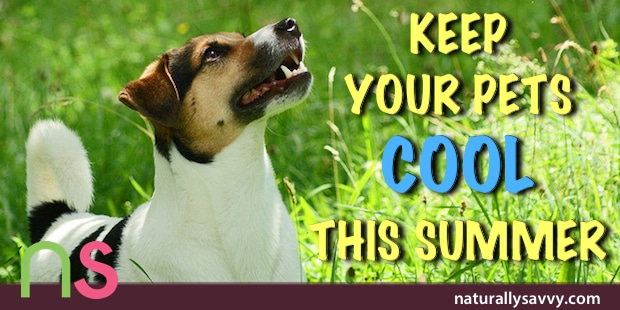
With the summer in full swing and more time spent outdoors, you can definitely include your pets in the family fun. Just like when you take precautions for your own health while in the sun-like staying hydrated and applying sunscreen-it is important to be proactive and avoid potential risks that summer heat can present to your pets.
Coping with the heat
- If your pet(s) will spend any significant amount of time outside, be sure they have a shady spot to rest out of direct sunlight.
- Limit intense exercise in the summer months and choose to exercise your pet in the early morning or late evening. It is best not to begin any new fitness program when it is hot outside, particularly if your furry friend has not exercised much in the past.
- Provide plenty of cool, fresh water in a clean bowl. Stainless steel bowls are easier to clean and more hygienic because they do not scratch, crack, and chip like plastic or clay bowls. Stainless steel also keeps water cooler for longer, especially if you put a little ice cube treat in the bowl.
- Avoid hot asphalt or sand that can burn tender paws. Doggie boots are a great option if your dog needs to walk on hot surfaces.
- Set up a small pool, mister, or sprinkler in the backyard to provide a fun way to keep your pet cool.
Breeds Susceptible to Hot Weather
You may assume that your four-legged friend will love the summer and being outdoors as much as you do, but many dogs are not bred to handle the heat due to thick coats or their inability to pant efficiently. Darker coats absorb more heat than lighter-colored coats. Also, if your dog has a thick coat, consider cutting hair to a one-inch length for the summer. Bulldogs, Boxers, Japanese Chins, and Pekinese are not able to cool themselves efficiently by panting due to flatter faces and should not be outside for long periods of time.
Read more about natural remedies for pets
Signs Your Dog Has Gotten Too Much of the Heat
It is important to pay attention to your dog when he is out in the hot summer weather. Providing water, a shady place to rest, and an opportunity to splash around in the river or lake will keep his body temperature in check.
Be aware of the signs of dehydration and overheating by keeping an eye on your pet’s tongue and demeanor. The mouth is a dog’s way of eliminating heat, and panting is a critical part of reducing body temperature. If he is too hot, his tongue will hang completely out of his mouth and you may notice his tongue “cups” at the end. The tongue and gums may also become bright red. Without water, a dog can become dehydrated, therefore, limiting his body’s ability to cool itself. A dehydrated dog will drool excessively, become lethargic, or have glassy or bloodshot eyes. If your pet exhibits any signs of overheating, take him to the veterinarian immediately.
Read more about homemade dog treats
Summer is a great time for having fun outside with friends and family. Since your pet is an important part of your family, make sure you help him cope with the warm weather comfortably so all can enjoy the quality time spent together.
Image via Loowgren










